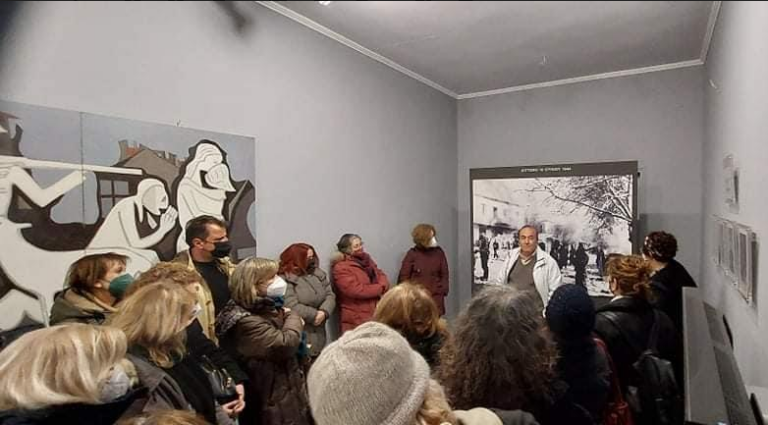Teachers being…educated! More than 50 teachers of the 4th Directorate, former Counselors and Coordinators in Schools of Attica, paid an educational/informative visit to Distomo, Boeotia and visited the Museum of the Victims of Nazism as well as the adjacent Byzantine Monastery of Osios Loukas, a UNESCO protected monument.
The teachers, in addition to the tour by Christos Papanikolaou, watched a documentary about the chronicle of the Massacre of 228 Distomites by the Nazi Germans on June 10, 1944. They were also informed regarding the one-day school trips (distance 149 km, free entrance, tel. 0030-2267-350130 etc.) as well as about the programs developed by the coordinator of the Museum, archaeologist Amalia Papaioannou for students, depending on age.

They were also informed about activities carried out by Primary and Secondary Education Schools in Distomo – in the Museum and in the area of the Mausoleum, such as the one that took place last week of Glyfada High School and which concerned an original presentation of educational work of the students outside of the Mausoleum of Distomo, in the presence of the Mayor Giannis Stathas. The soul of the educational activity of the teachers of Attica was a group of Coordinators, among whom was Ioanna Kampourmali from Distomo.
Museum of the Victims of Nazism Info
The Museum of the Victims of Nazism was founded in 2005 by the then Municipality of Distomo. The purpose of the Museum is the acquisition, acceptance, safekeeping, maintenance, recording, documentation, research, study and interpretation, as well as the exhibition to the public of tangible and intangibles testimonies, which refer to and document the historical event of the massacre of the inhabitants of Distomo by the German occupation troops on June 10, 1944, but also of the general period of the Occupation in the prefectures of Boeotia and Fokida.

The Museum of the Victims of Nazism is located in the center of Distomo. It is housed in a two-storey stone building. On the ground floor the visitors of the Museum can watch a half-hour documentary, but also visit a collection of objects of daily life of a rural community of the interwar period. Some of the items come from the families of the victims of the Distomo Massacre. The exhibition of the Museum is in the two rooms of the first floor. In the first room, the Chronicle Room, there are copies of photographic items and excerpts of the daily press, while in the Hall of Victims, the photos of the victims are exhibited.
Ask me anything
Explore related questions





